If you think that childhood engagement in the creative arts has no use in success later in life, you might want to think again. Researchers from Michigan State University have found that children who were exposed to a wide variety of arts and crafts were better able to think “out of the box”. They were more likely to create unique inventions worthy of patents, brainstorm smart ideas or publish provocative papers on science and technology. Stronger critical skills, higher levels of social tolerance, greater empathy; the benefits of early art exposure goes on.

Be ArtMazed
A structured art programme designed to develop proper techniques and skills, ArtMazing programmes offers various levels of art for children aged 4 to 17 years old. An interdisciplinary approach that infuses school academic subjects into art, children don’t just learn about art during classes, they also learn about other subjects while experimenting with colours and patterns.
We took a peek at what went on during an ArtMazing (Elementary II) level class.
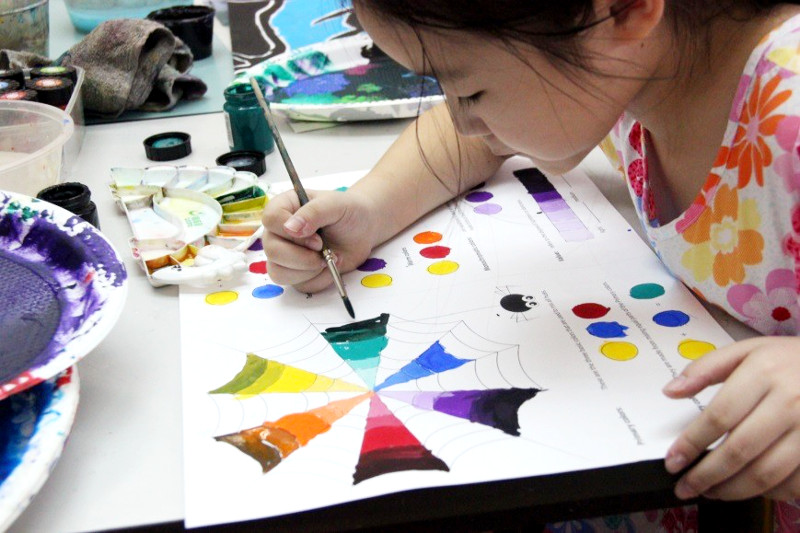
Colour me up: What is a primary colour? What colours do you need to add to the primary colour in order to get a lighter shade? “For first-time students, we first work on the colour wheel to help them have an overall understanding of how colours work,” shares Teacher Anh. After this activity, children will have a better understanding of colours, which will help them to make better aesthetics choices in their upcoming masterpieces and the ability to master colour blending skills.
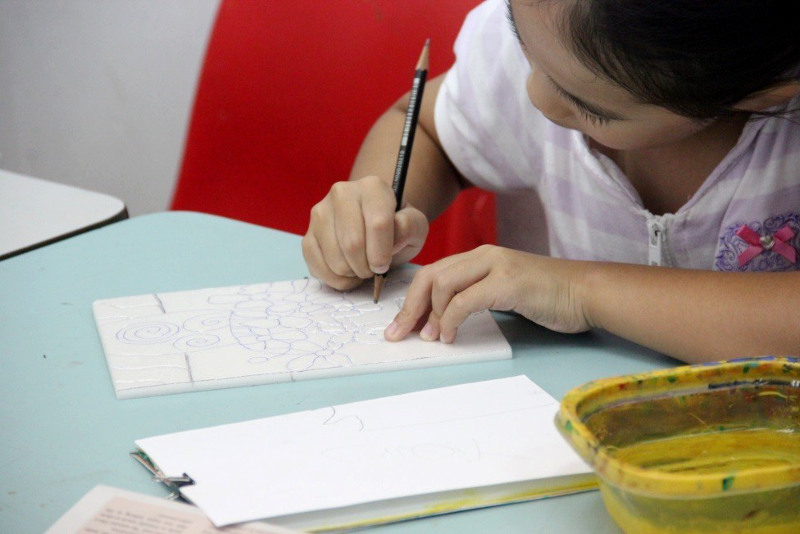
This lesson is inspired by one of the famous art movements, POP Art. In the first lesson, students are introduced to all the essential information about this art movement such as its famous artist, its subject matters and special characteristics.
‘Foam’ blocking: Woodblock printing is a technique used for printing text, images or patterns. Instead of wood, students ‘carve’ their drawings on a foam board with pencils. They first draw the pattern they desire on a piece of tracing paper, which they later use to trace onto their foam.
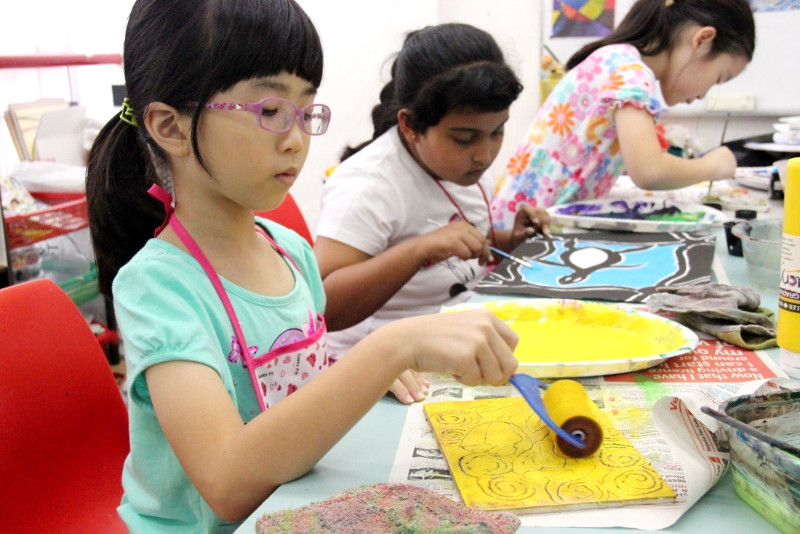
Once their foams are all ‘carved’ and deep enough, they paint the board with a roller. During this stage, the students use trial and error to find out what is the best paint consistency to roll onto the foam. If it’s too wet, the paint will not stay. If it’s too thick, their papers might stick with the foam, thus it causes damage to the papers when students try to take them out.
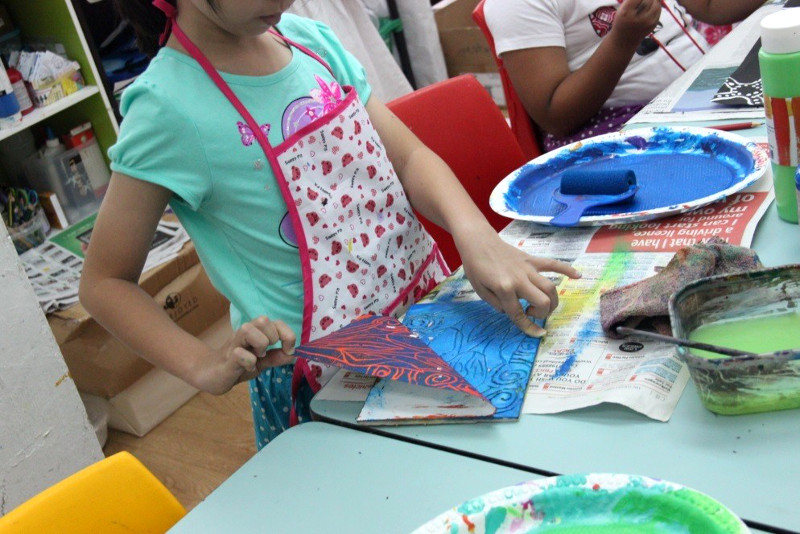
Next, they ‘print’ their design on a coloured background. Each of them will have to print a total of eight different prints with a variety of colour combinations. Out of the eight designs, six of the designs have to be accompanied by a complementary background colour.
For every pair of complementary colour, the students have 2 papers to print on, for example, a paper with blue background and another one with orange background. This helps students to learn a fact that some colours are darker or lighter than others, and that in order to get a good effect for the print, they should use the darker colour to print on the background with a lighter colour.
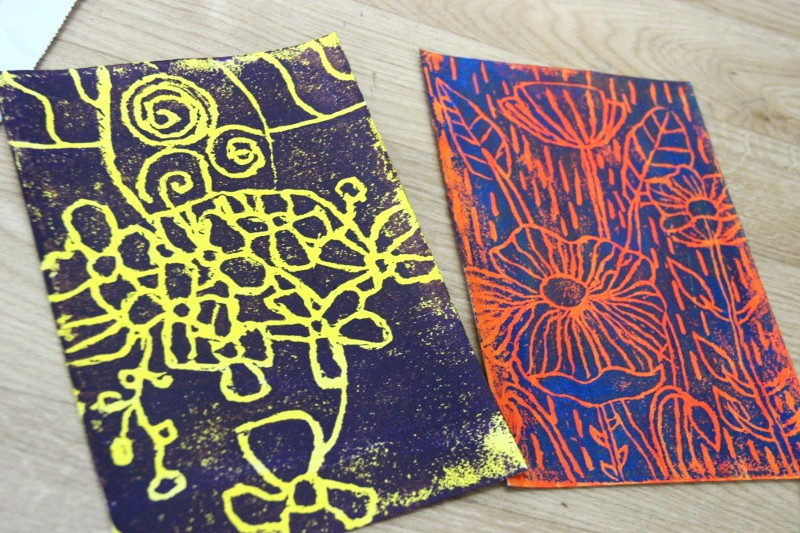
For instance, if they used blue on their board, they would have to use orange as their background colour (orange is the complementary colour of blue).
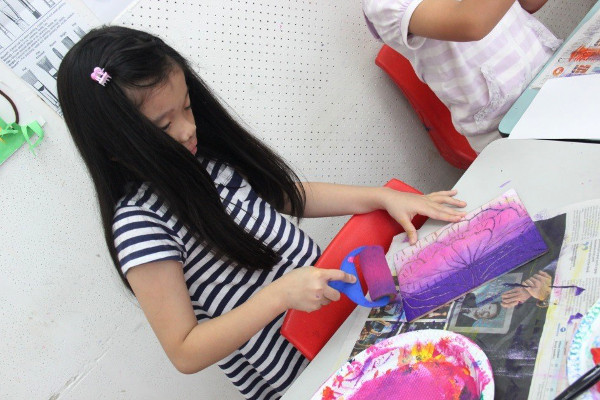
The other two designs include a single solid coloured print on a white background, and a print with varying shades but of the same colour tone. This helps students to understand the concept of complementary colours at a deeper level. 9-year-old Kaelyn mixed her own colours to get the varying shades of pink and purple.
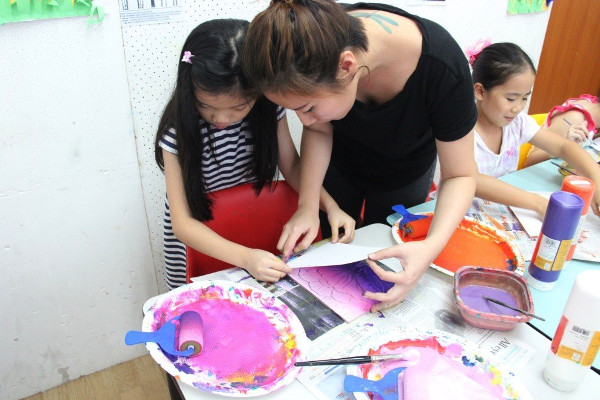
Teacher Anh guides each child as they progress in their work. Anh, who graduated from Lasalle College of the Arts, was encouraging throughout the class and gave room for each child space to try and learn at their own pace; even if this meant they made mistakes. When one of the girl’s papers got stuck onto her foam board, causing the print to be damaged, Teacher Anh told her it was okay and to try again because “we all learn from making mistakes”.
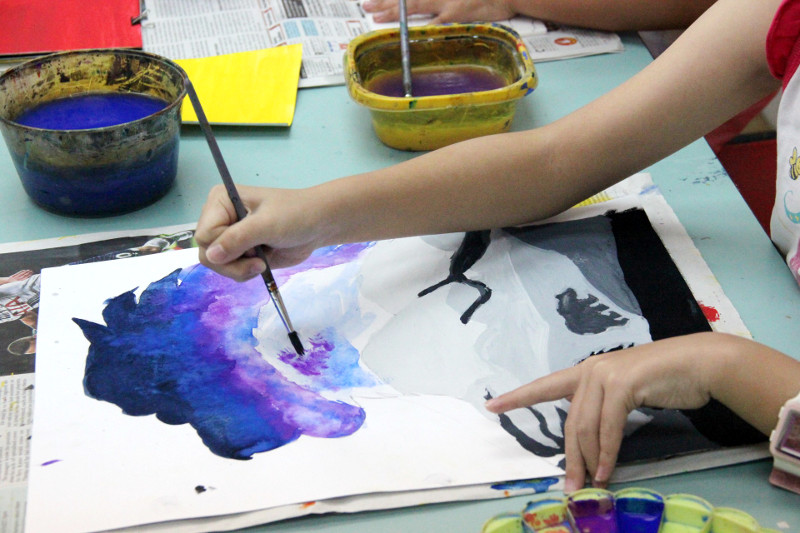
Wet-on-wet technique: In this piece, children experiment with watercolours, creating shades of dark purple and blue at the top of the picture, slowly graduating to the lighter cooler shades. Here, 9-year-old Jie Ying realised that she needed to use more water and less paint to get a lighter shade.
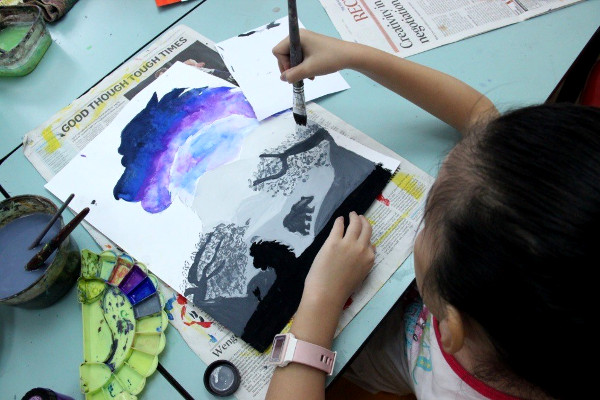
Once she is satisfied with her toning, she moves on the backdrop, and adds more details to the landscape, such as leaves on the tree and the grass.
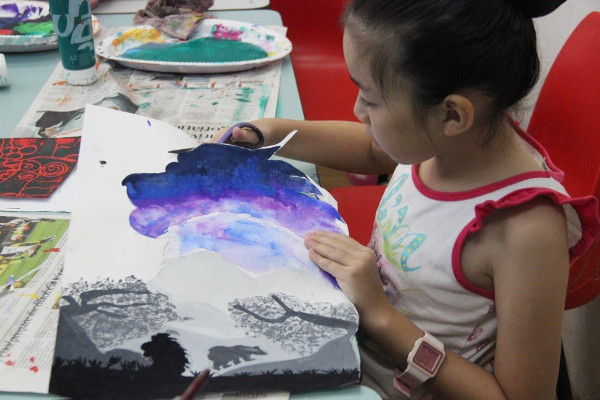
After painting the details, it’s time to cut it up to place it against a black background.
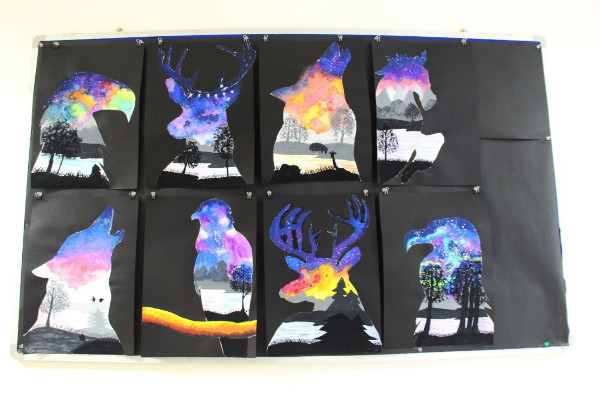
And a new masterpiece is ready to be framed! Teacher Anh shares each artwork takes about two to three lessons to complete.
ArtMazing Programmes
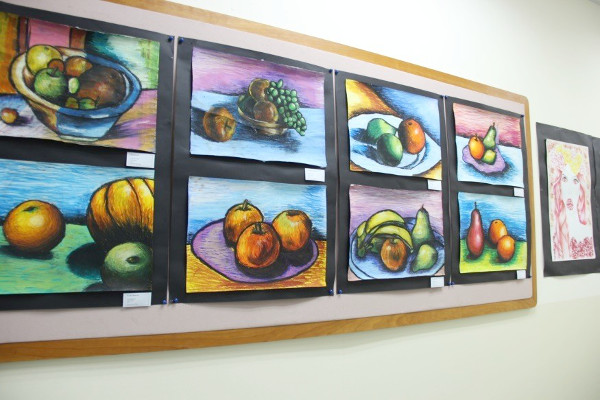
Students’ artwork at Crestar Learning Centre, Hougang.
Beginner (4 years old)
Focus: Developing child’s psychomotor skills
– Children learn to draw
– Explore various mediums such as oil pastel, colour pencils, poster colour, water col-our and crafts
Elementary I (5 – 6 years)
Focus: Exposure to various art mediums
– Water colour, tempera and acrylic painting,
– Identifying colours in a colour wheel
– 2D relief and crafts
Elementary II (7 – 9 years)
Focus: Cognitive skills and understanding of art
– Drawing and sketching with tones (from light to dark)
– Water colour and colour pencil technique
– Acrylic painting
– Colour scheme analysis, able to know what are complementary colour
– 3D Art such as clay modelling and paper sculpture
– Printmaking
Intermediate I (9 – 11 years)
– Drawing and sketching
– Painting (various kinds of paint such as water-colour, acrylic, poster paint with tonal value)
– 2D relief art and 3D art
– Explore different kinds of art
Intermediate II (11 – 13 years)
– Basic drawing knowledge (contour, cross contour drawing, perspective, etc)
– Sketching
– Painting with various kinds of paint
– 3D art
– Explore different kinds of art
Advanced I (13 – 15 years)
– Drawing and sketching (still life, animal, etc)
– Painting
– Elements and principles of Art and Design
– 3D art
– Explore different kinds of art
Advanced II (15 – 17 years)
– Drawing and sketching (still life, animal, etc)
– Painting
– 3D art
– Explore different kinds of art
ArtMazing Course duration: 1 year per level
Lesson duration: 60 – 90 minutes
Fee per term: $280.90 onwards
Besides the above Beginner and Elementary classes, Crestar also offers modular Courses such as Felt Craft, 3D Paper Diorama, Paper Relief, Paper Sculpture, Mosaic Art.
* * * * *
Build a strong foundation and foster your child’s artistic potential with Crestar Learning Centre ArtMazing programme. Find out more about the art classes at the Crestar Learning centre nearest to you.
This post is brought to you by Crestar.
* * * * *
Like what you see here? Get parenting tips and stories straight to your inbox! Join our mailing list here.
Running a service or business targeted for parents? Reach out to a wider audience in our Art Classes for Kids compilation. Leave your contact details here and we will get in touch with you.















































Leave a Comment: